Papua New Guinea Paradise Bird Manor Coffee beans Little Blue Mountain, known as the flavor of Paradise Bird Coffee beans
Professional coffee knowledge exchange more coffee bean information please follow the coffee workshop (Wechat official account cafe_style)
Papua New Guinea is a country familiar to coffee lovers but unfamiliar to coffee lovers. Many people have heard of Papua New Guinea coffee, but they drink very little. Many lovers who have drunk coffee from Papua New Guinea will describe it as a "blue mountain" feeling. In order to find out why the coffee in Papua New Guinea is called Little Blue Mountain, Qianjie specially bought this coffee and went to the shelves to find out.
Papua New Guinea
Papua New Guinea, to the east of Indonesia, has a standard island climate, located between the equator and 10 degrees south latitude, with tropical rain forest volcanic rocks and plateau topography, between 1200 and 2500m above sea level. The regional flavor of coffee in Papua New Guinea is very different from that of Indonesian coffee beans. Herbs and low flavors are bright, sweet and sour, with aromas of flowers and fruits, which are similar to those of South America. Qianjie Coffee is called Little Blue Mountain because Papua New Guinea has the same island climate, high altitude, and volcanic soil characteristics, and its coffee bean transmission route is also introduced from Jamaica to Papua New Guinea, so it is called Little Blue Mountain, but the flavor is different. Jamaica Blue Mountain is a very mellow coffee flavor, while Papua New Guinea coffee flavor is mellow with a little acidity.
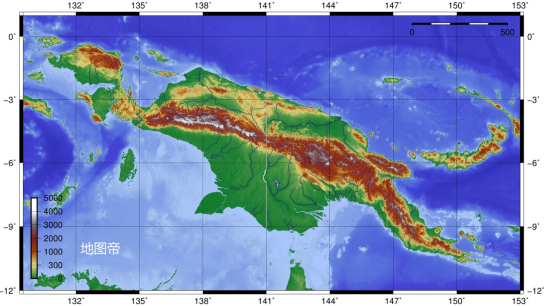
Planting History of Papua New Guinea
In 1931, Ironhide Card was introduced from Jamaica to Papua New Guinea. At that time, Britain had occupied Jamaica for nearly 300 years, and the most typical coffee in Jamaica was the Blue Mountain Coffee of Iron Card. Because of the friendly relationship between Australia and Britain, it was reasonable for Papua New Guinea to introduce tin card. Qianjie Coffee will take the name of Little Blue Mountain to introduce Papua New Guinea Coffee to guests. After all, the historical reasons are there, well-founded, and the name of Little Blue Mountain is much easier to remember than Papua New Guinea.
Bourbon coffee beans were introduced from Kenya in 1950. Coincidentally, Kenya was also a British colony at that time. The open cultivation encouraged by the government led to the substantial growth of the coffee industry in the 1970s and 1980s.
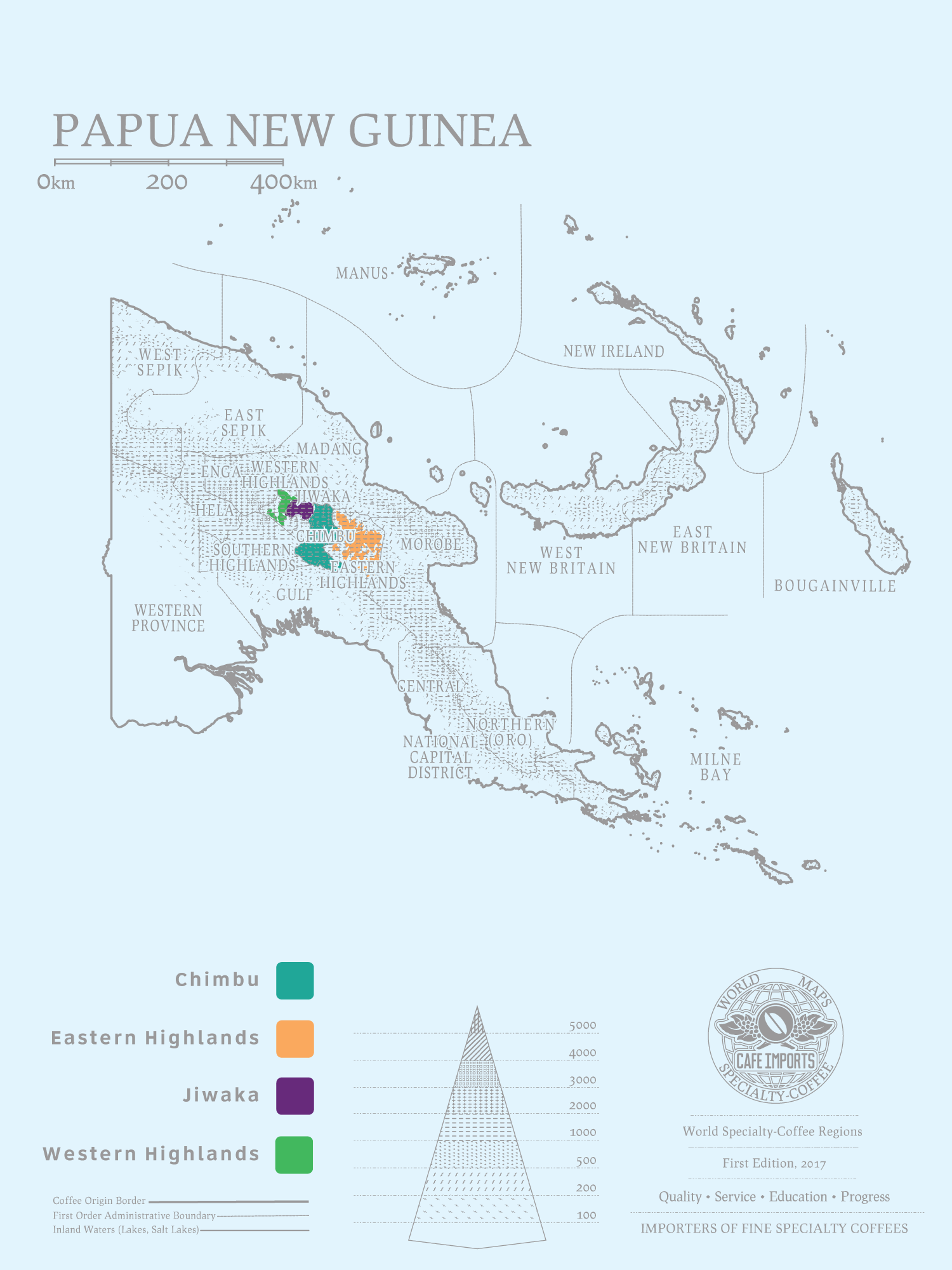
In 1961, after the end of World War II, the western part of the Dutch island of New Guinea declared independence under the name "West Papua", but only a few months later it was invaded by the same independent Indonesia, where Indonesia established the province of Irian Jaya. After 2003, it is planned for Papua and West Papua provinces.
Since moving to New World and Kaddura from Brazil in 1962, the quality of coffee beans in Papua New Guinea has made a great leap forward.
Coffee industry in Papua New Guinea from adversity to diversity
In the last century, members of the International Coffee Organization (ICO) imposed quotas on coffee exports, and in order to get enough coffee, Australia had to buy large quantities of coffee beans from Papua New Guinea, which was still Australian territory at that time, according to a translator from the Financial Network.
After Papua New Guinea declared its independence in 1975, and after ICO abandoned quotas in the 1980s, Australian coffee importers preferred to buy coffee from around the world. Since then, the coffee industry in Papua New Guinea has begun a brutal struggle.
In particular, in the past decade, coffee production in Papua New Guinea has fallen by 22 per cent from about 1 million bags of 60 kg bags in 2009 to 800000 bags today. The decline in production is largely due to the aging of coffee trees, and in the more than 30 years since the 1980s, few people in Papua New Guinea have chosen to replace old trees, let alone teach them how to replace them. Fortunately, in an ongoing support programme funded by the World Bank and the United Nations Fund for International Agricultural Development (since its inception in April 2010), more than 7 million coffee trees have been replanted or restored. According to the World Bank, many farmers who participated in the first round of replacement planting have seen higher yields.
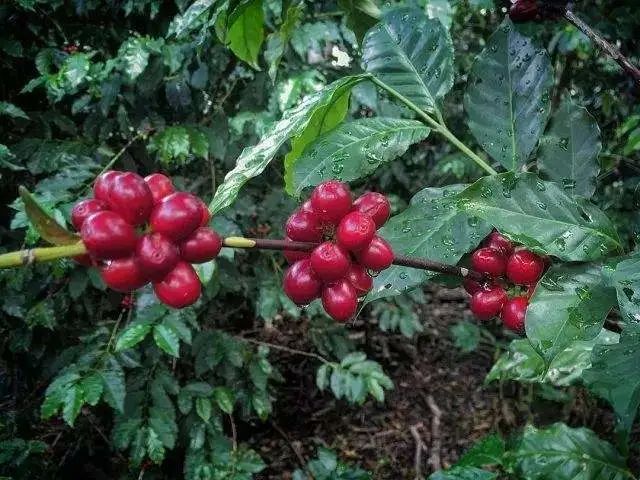
Although Papua New Neya has incredible soil conditions, perfect rainfall, weather and climate, and can be said to have all the basic elements of making delicious coffee, for various reasons, Papua New Guinea is unable to consistently produce large quantities of high-quality coffee, which has been a problem for Papua New Guinea, mainly because more than 85% of the coffee is produced by smallholder farmers. Unlike other coffee-producing countries with a large number of small plots of land for independent farmers, it is difficult for international buyers to buy coffee beans of stable quality in Papua New Guinea.
The instability of quality lies in the difficulty in imparting knowledge of coffee cultivation, as there are more than 10,000 tribes scattered across Papua New Guinea, speaking more than 800 different voices, which makes it difficult for professional coffee knowledge to spread smoothly there. At the same time, the complexity of tribes also caused the problem of land ownership. Coffee plots have not been cultivated because the land changes hands or people compete for ownership. In addition to the lack of knowledge and resources, small farmers also lack the incentive to stick to coffee because they are more dependent on self-sufficient agriculture. At the same time, the rate of return for growing coffee is too low for them. For farmers in Papua New Guinea, most of their farming time is spent on food, with coffee in second place.
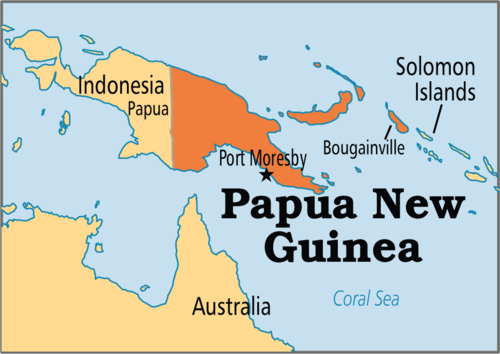
In the report "Coffee Market Research in Papua New Guinea" released in 2019, it was pointed out that the current wide range of government regulations and requirements actually complicate the already difficult business environment. "by reducing government intervention and supporting the country's coffee industry, it will be more productive," the report said. Expand agricultural extension services and best practice training; 2. Scientific research on agricultural and economic issues has led to new national plans and policies. Support for private companies promoting business at home and abroad, "the study identified three priority areas of work that are expected to change the industry: supporting women's participation in coffee; promoting business growth, domestic consumption and international trade; and promoting quality from seeds to cups.
Papua New Guinea Bird of Paradise
Country of origin: Papua New Guinea
Manor: Sigley Paradise Bird Manor
Altitude: 1600-1800m
Treatment: washing treatment
Variety: iron pickup
Grade: AA
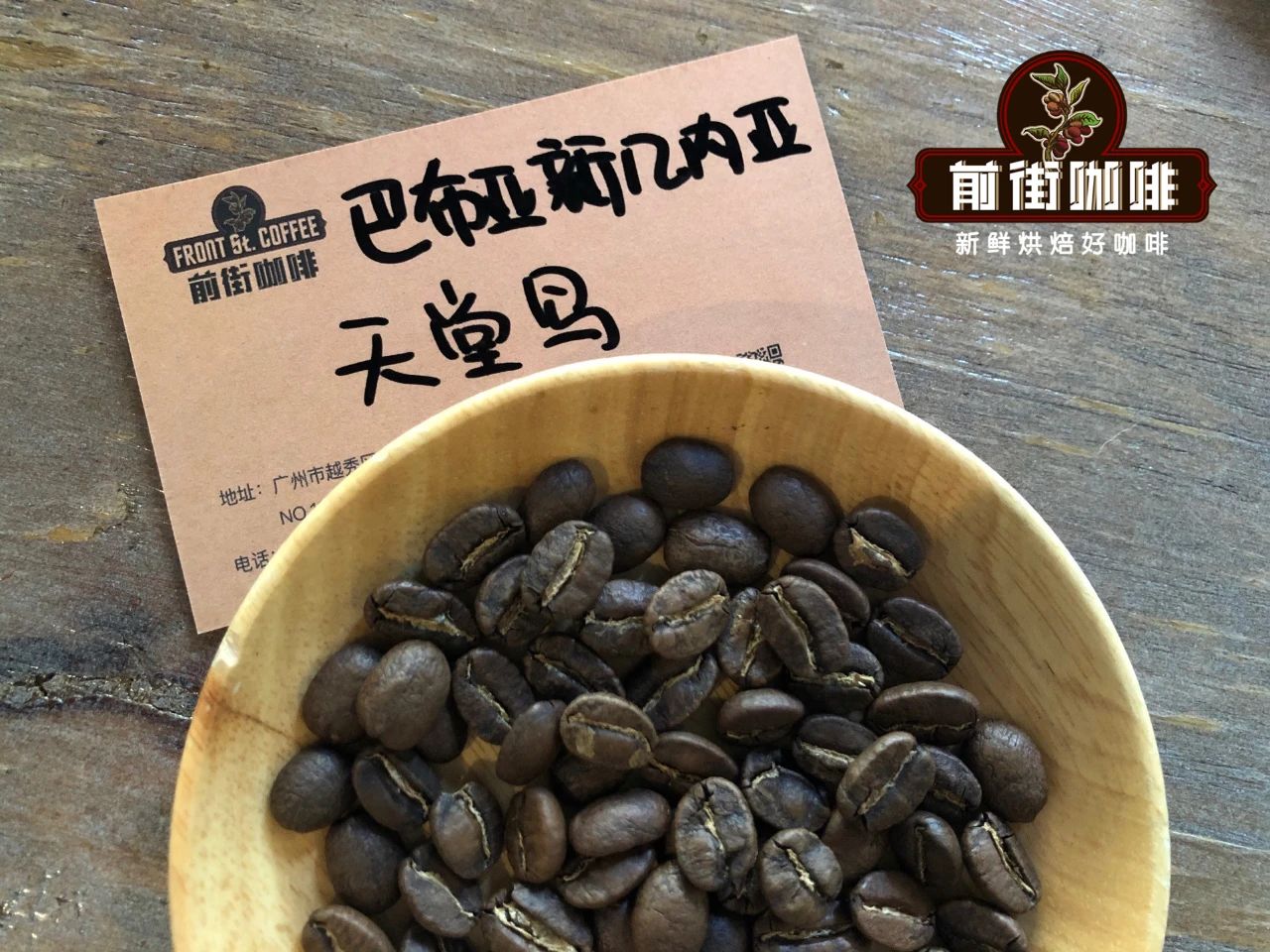
Sigri Paradise Bird Manor
The people of Papua New Guinea regard the beautiful bird of paradise as a bird of freedom and joy, a "gift of the gods". Siguri Paradise Bird Manor Iron pickup Coffee beans, like the migration of birds, have traveled long distances from the Jamaican Blue Mountains to Papua New Guinea to breed, with the same pedigree of the Jamaican Blue Mountains. This blue mountain pedigree is also the focus of Papua New Guinea Paradise Bird Coffee beans. Qianjie Coffee purchases each coffee bean in the hope of having its own unique characteristics, and does not want to appear different beans with the same flavor. This is why Qianjie Coffee spends a lot of time selecting beans, adjusting baking parameters and so on. One coffee bean can be similar to other coffee beans, but it should also be different.
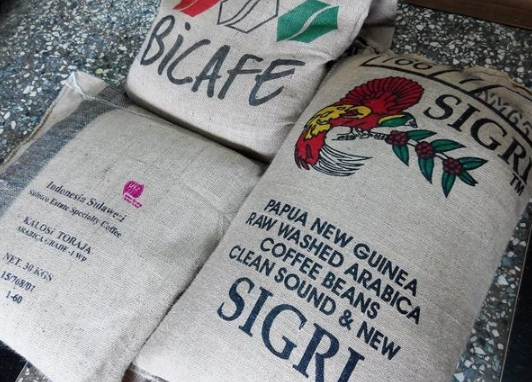
The manor was founded in 1950 and has been a pioneer in the local coffee industry for more than 60 years. The Bird of Paradise Manor is located in the Waghi Valley Valley in the Western Highlands Province (Western Highlands), about 1500 meters above sea level, with mineral-rich volcanic soil, cool climate, fertile soil and abundant rainfall. Bird Paradise Manor also pays great attention to ecological protection, in order to protect soil and water, reject the use of pesticides and pesticides, and take care of the ecology and nearby birds. Bird Paradise Manor has adhered to a high standard of planting and handling system for many years. During the harvest season from April to September each year, only fully ripe red coffee fruits can be picked by hand, making the coffee berries sour and sweet. At Paradise Bird Manor, cup tests are carried out every day to ensure that the plantation provides customers with the same quality gourmet coffee. As a result, Paradise Bird Manor has become a classic of boutique coffee in the world. As mentioned earlier, Qianjie Coffee chooses this Paradise Bird Manor coffee beans to take a fancy to the manor's strict production chain, so as to ensure the quality of coffee beans.
A variety of coffee beans-- iron pickup
Iron pickup has an elegant flavor, but its physique is weak, its disease resistance is low, and it is easy to be infected with leaf rust. Qianjie Coffee believes that the top leaf of the iron pickup coffee tree is bronzed, and some people call it "red top coffee". The beans of the iron pickup are larger, cone-shaped or thin-shaped, which is different from the round beans of bourbon coffee beans. Iron pickup coffee has its unique quiet and clean flavor, as well as balanced features, high cleanliness.
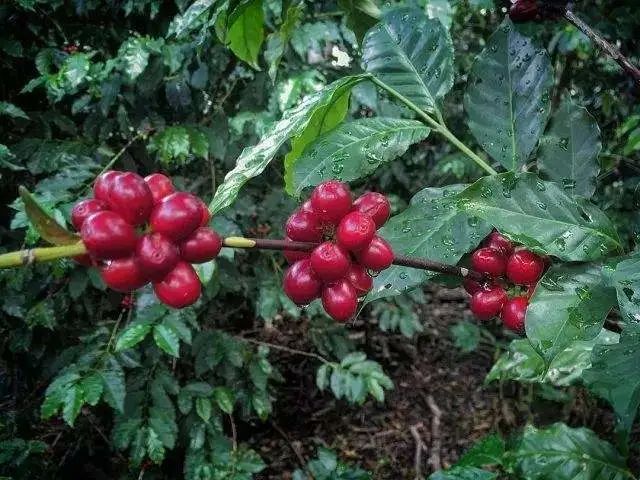
Coffee bean treatment
The ripe red coffee berries are harvested and sent to the manor's own water washing plant for treatment. The local washing treatment in Papua New Guinea is different from that in Central and South America.
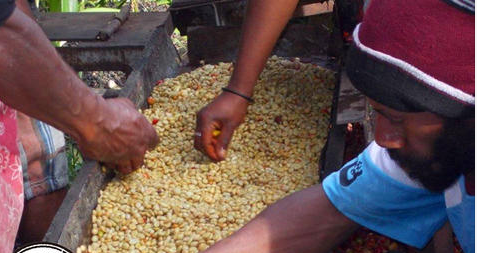
Use three times of water washing and fermentation, each time soak for about 24 hours, and change clean water to control the coffee flavor; after cleaning, remove the shell of raw beans and then carry out various grades, such as AA, AB, PB beans, etc., this fine post-processing method brings bright and delicate fruity flavor to the coffee itself, clean and long sweet taste. Qianjie Coffee found that there are strictly divided producing areas in the coffee grading system, and the coffee beans they produce all have one thing in common, that is, the beans are uniform in size and there are fewer defective beans. In this case, the color is uniform when roasting, and the taste will be much cleaner.
Qianjie baking suggestion
Qianjie coffee is recommended to use medium roasting, because the tin card is a low-density raw bean, in order to highlight its refreshing acidity and fruit aroma, will focus on the firepower adjustment after the first burst.
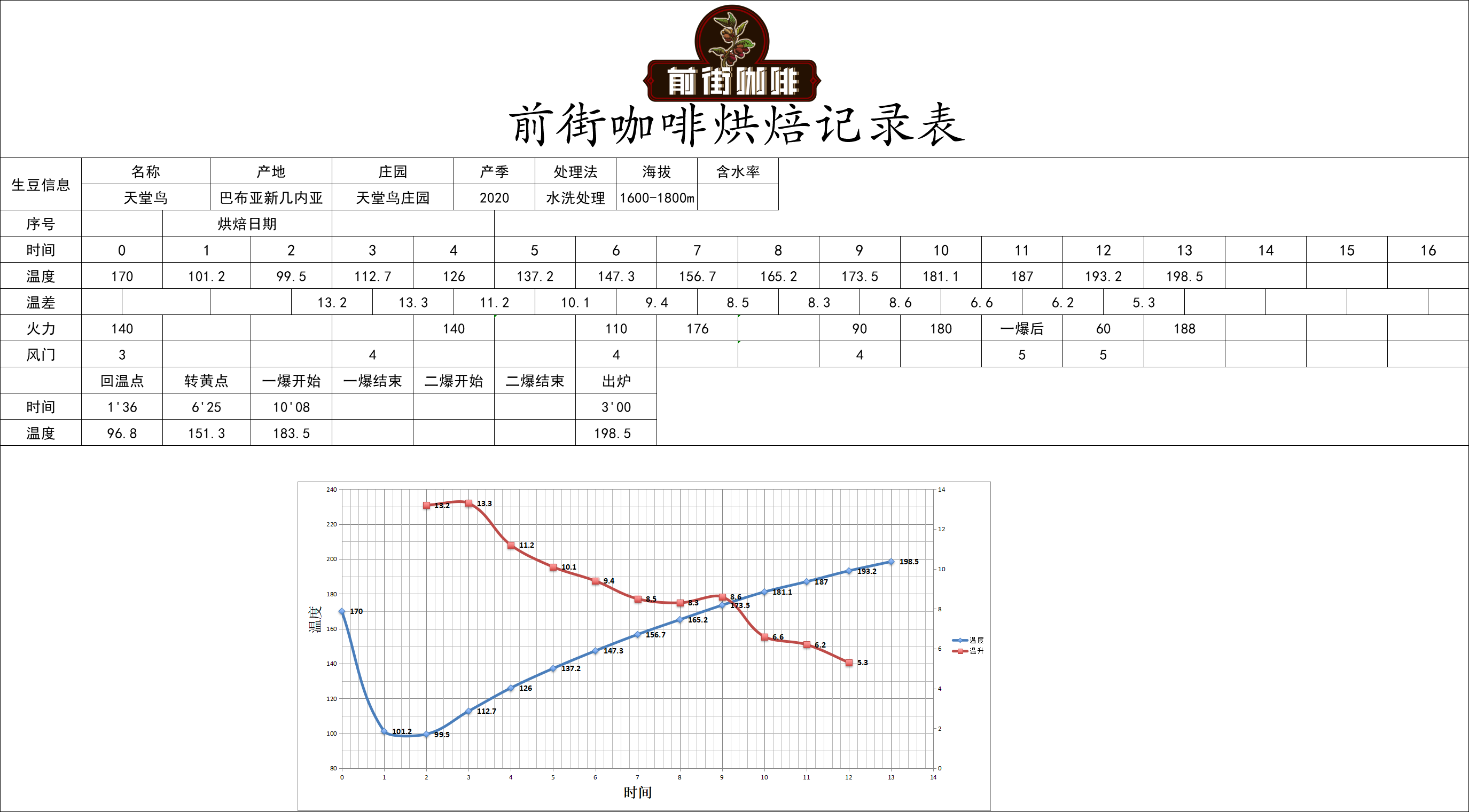
Qianjie Cup test report
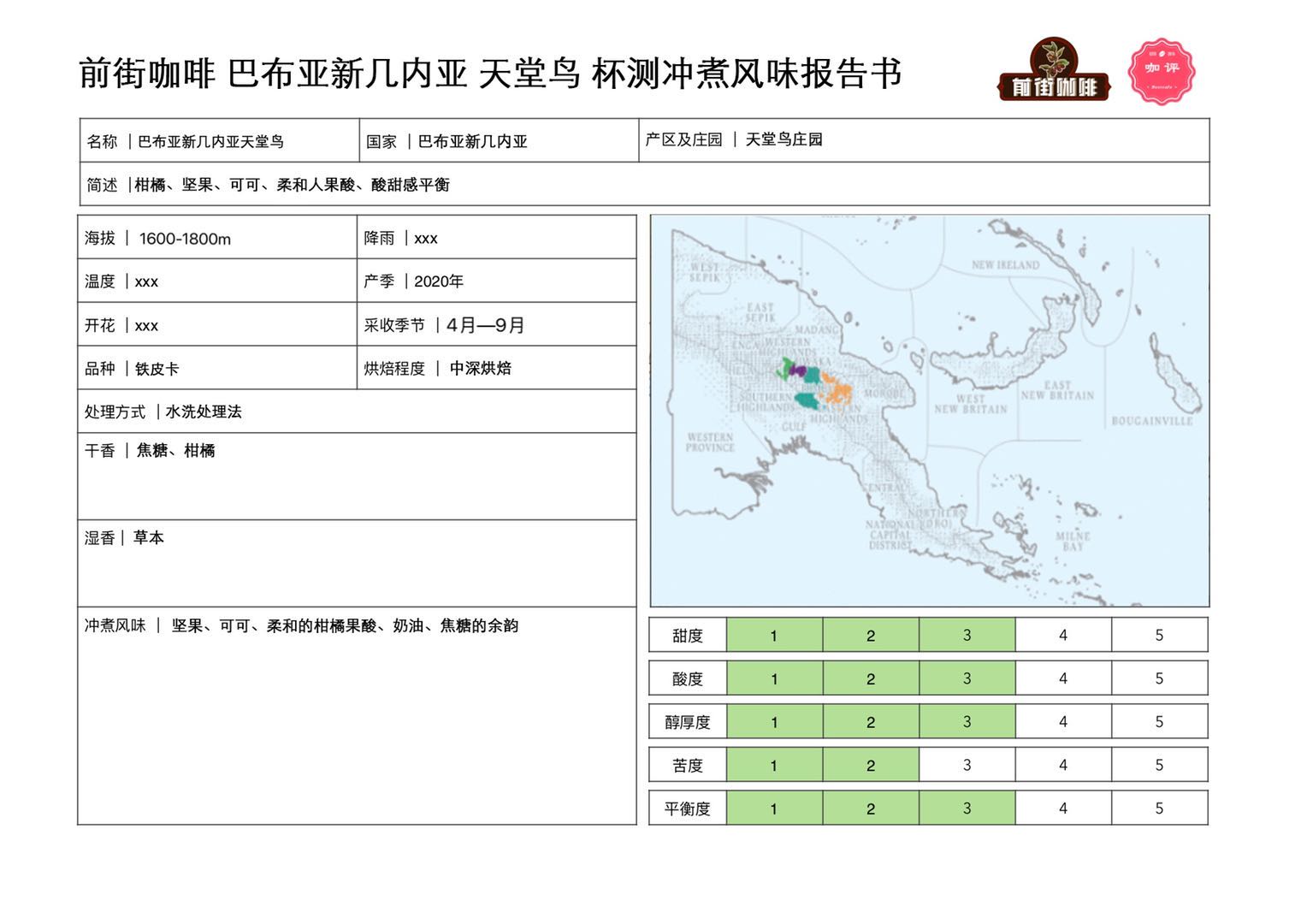
The suggestion of cooking in Qianjie
Qianjie coffee is recommended to use Kono filter cup, because it has few ribs and is located at the low end, it can make the filter paper stick to the filter cup to achieve the effect of limiting air flow, so as to slow down the flow rate and increase the contact time of water powder. Soaking can be used to extract more coffee substances and improve the mellow taste. The water temperature is 88 ℃, which can be regarded as a lower cooking temperature, which can avoid excessive extraction of miscellaneous flavor of coffee beans in the cooking process, because the deeper the roasting degree of coffee beans is, the more miscellaneous smell will increase.
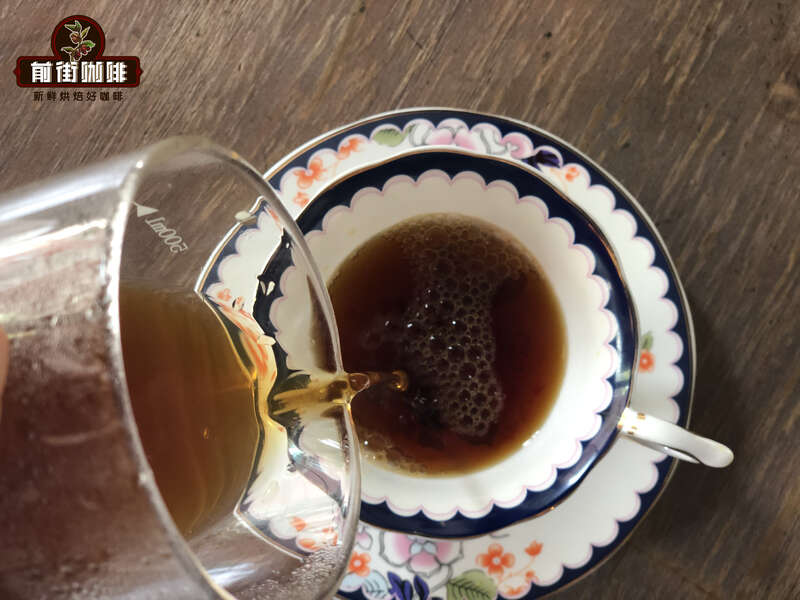
Powder content: 15g powder 1:15
Degree of grinding: coarse granulated sugar size, pass through Chinese standard No. 20 screen 75%
Qianjie coffee is extracted by stages: 30 grams of water is steamed for 30 seconds, small water is injected around the circle to 125 grams, when the water level is about to be exposed to the powder bed, continue to inject water to 225 grams, (steaming starts) extraction time is 2 minutes-2 minutes 10 seconds.
Cooking flavor: nut, cocoa, soft fruit acid, caramel finish, slightly smoky, overall flavor balance.
For more boutique coffee beans, please add private Qianjie coffee on Wechat. WeChat account: kaixinguoguo0925
Important Notice :
前街咖啡 FrontStreet Coffee has moved to new addredd:
FrontStreet Coffee Address: 315,Donghua East Road,GuangZhou
Tel:020 38364473
- Prev
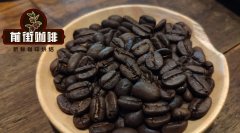
How to identify the varieties of coffee beans? What is the basis for the differences between coffee varieties?
Every day, producers, traders, roasters and consumers are looking for different varieties of coffee. Each variety has its own unique cup profile, as well as many other personality traits. Farmers seek different varieties, not just quality, for many different reasons. They can also consider, for example, disease resistance or yield. In addition, different varieties will be suitable for different producers
- Next
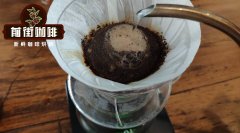
What kind of coffee is boutique coffee? Can Brazilian boutique Robsta be called boutique coffee?
Boutique coffee is usually associated with Arabica coffee beans, while robusta beans are usually associated with commercial coffee, instant coffee or blended coffee. Although Arabica caffeine is famous for producing cup contours suitable for special coffee, the key to its success lies in its attention and attention to its production and processing processes, as well as the resources and research invested to encourage its production. This shows that, yes,
Related
- Beginners will see the "Coffee pull flower" guide!
- What is the difference between ice blog purified milk and ordinary milk coffee?
- Why is the Philippines the largest producer of crops in Liberia?
- For coffee extraction, should the fine powder be retained?
- How does extracted espresso fill pressed powder? How much strength does it take to press the powder?
- How to make jasmine cold extract coffee? Is the jasmine + latte good?
- Will this little toy really make the coffee taste better? How does Lily Drip affect coffee extraction?
- Will the action of slapping the filter cup also affect coffee extraction?
- What's the difference between powder-to-water ratio and powder-to-liquid ratio?
- What is the Ethiopian local species? What does it have to do with Heirloom native species?

